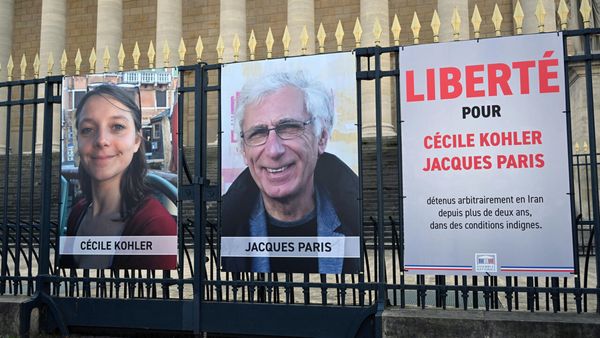
This article is part of our series on big ideas for the Universities Accord. The federal government is calling for ideas to “reshape and reimagine higher education, and set it up for the next decade and beyond”. A review team is due to finish a draft report later this month, with a final report in December 2023.
Every year thousands of students around Australia sit their final high school exams. The performance in these exams will help determine their Australian Tertiary Admission Rank (ATAR). For many, it will also determine whether they can attend university, which university, and which undergraduate degree they can enrol in. The Universities Accord review team has called for advice on the role admissions systems play in “matching learners to pathways” and supporting an increase in participation and success at university. The accord also has a broader focus on improving access to a quality higher education.
When discussing equity issues around university entry, most attention is usually paid to perceived school quality, exam preparation and assessment design.
Less attention is paid to the crucial process by which each student is allocated a place in a particular degree at a particular university.
Our research shows design flaws in this process can see school leavers miss out on studying their most preferred degree, even if they are eligible to enrol in it based on their academic performance.
This can have significant ramifications for a students’ lifetime earnings, career progression and professional satisfaction.
The NSW admissions system
We studied the New South Wales admissions system, which is managed by the Universities Admissions Centre. Although there is some variation, other Australian states and territories have similar systems.
Undergraduate applicants are asked to submit an ordered list of five degrees for which they would like to be considered.
The Universities Admissions Centre then puts each student’s preference information into an algorithm that accounts for their individual score and the entry cut-off scores determined by each university for each of their degrees.
Obviously, an applicant’s choice of which five degrees to list is of critical importance to them.
The centre provides students with advice to help them optimise their preferences. At the time of our study it was:
List your ‘dream preference’ at number one but follow that with realistic preferences. At the bottom of the preference list you should include one or two ‘safe’ options to ensure that you get an offer.
(The Universities Admissions Centres website now says: “First on your list should be the course you’d most like to do, followed by your second, third and fourth preferences and so on.”)
So students need to make a sophisticated gamble to determine their future careers. They need to “dream” but also be realistic. It may not be in their best interests to list the five degrees in the order in which they truly prefer them.
If they only include dream degrees, with high cut-off marks, they may miss out on a university offer. But if they only include safe options, with low cut-off marks, they may miss out on doing what they truly want to study.
Read more: Students think the ATAR is 'unfair' but we need to be careful about replacing it
Our study
To assess these theoretical concerns, in 2019, we ran an experiment with students experienced in applying through the actual NSW admissions system.
More than 800 participants were provided with the advice they would have typically received from the Universities Admissions Centre (that is, list a “dream” preference first, then include more realistic options).
All participants were given a fictitious ATAR and a set of six degrees. They then had to make a preference list of five degrees.
Participants were rewarded with money depending on the outcome of the experiment. They received more money when offered a place in a degree they preferred more highly.
Our findings
Our process was designed to mimic – but be more simple than – the University Admission Centre. Despite this, 75.5% of participants failed to report their preferences in order of their best interests. That is, list what they really wanted to do.
We also found students from comprehensive public high schools were at least 6.9% more likely to make a “mistake” (by not telling the truth about their preferences) than peers from public selective high schools and private schools.
Our research shows the system is not only inefficient but confusing to applicants.
Students can also be exposed to conflicting advice when applying to university. Some universities have been known to advise students to list their “safe” choice first to make sure they get in.
A redesign is needed
We believe the current process needs a thorough redesign.
Limiting the number of applicants’ preferences to five degrees is a problem. A very risk-averse applicant would include too many safe options and likely miss out on better ones for which they would have a chance to get in. Meanwhile, a risk-loving applicant might list only hard-to-get-in degrees and completely miss out.
A better solution would be to allow applicants to list as many degrees as they want, up until they are indifferent between their least preferred degree and not going to university at all.

Given there are hundreds of degrees to choose from, it would be very difficult to come up with a complete and exhaustive list. However, a practical solution is readily available: applicants first submit their five most favoured degrees. If they don’t get an offer – and only if they don’t get an offer – they submit a second batch of five degrees.
Most will be matched in their first or second batch. Applicants who are not matched can keep submitting further batches. As is the case now, they only need to think in “fives”, but once they have an offer, they are removed from the applicant pool.
We believe it is possible for Universities Admissions Centre’s current process to be changed so it is easier to understand.
This would eliminate the need for strategising by applicants and advice on how to strategise. If you understand how our method works, we believe high school leavers will too.
Pablo Guillen receives funding from the Australian Research Council.
Mark Melatos receives funding from the Australian Research Council. He is a member of the NSW HSC Standards Committee.
Onur Kesten does not work for, consult, own shares in or receive funding from any company or organization that would benefit from this article, and has disclosed no relevant affiliations beyond their academic appointment.
This article was originally published on The Conversation. Read the original article.







